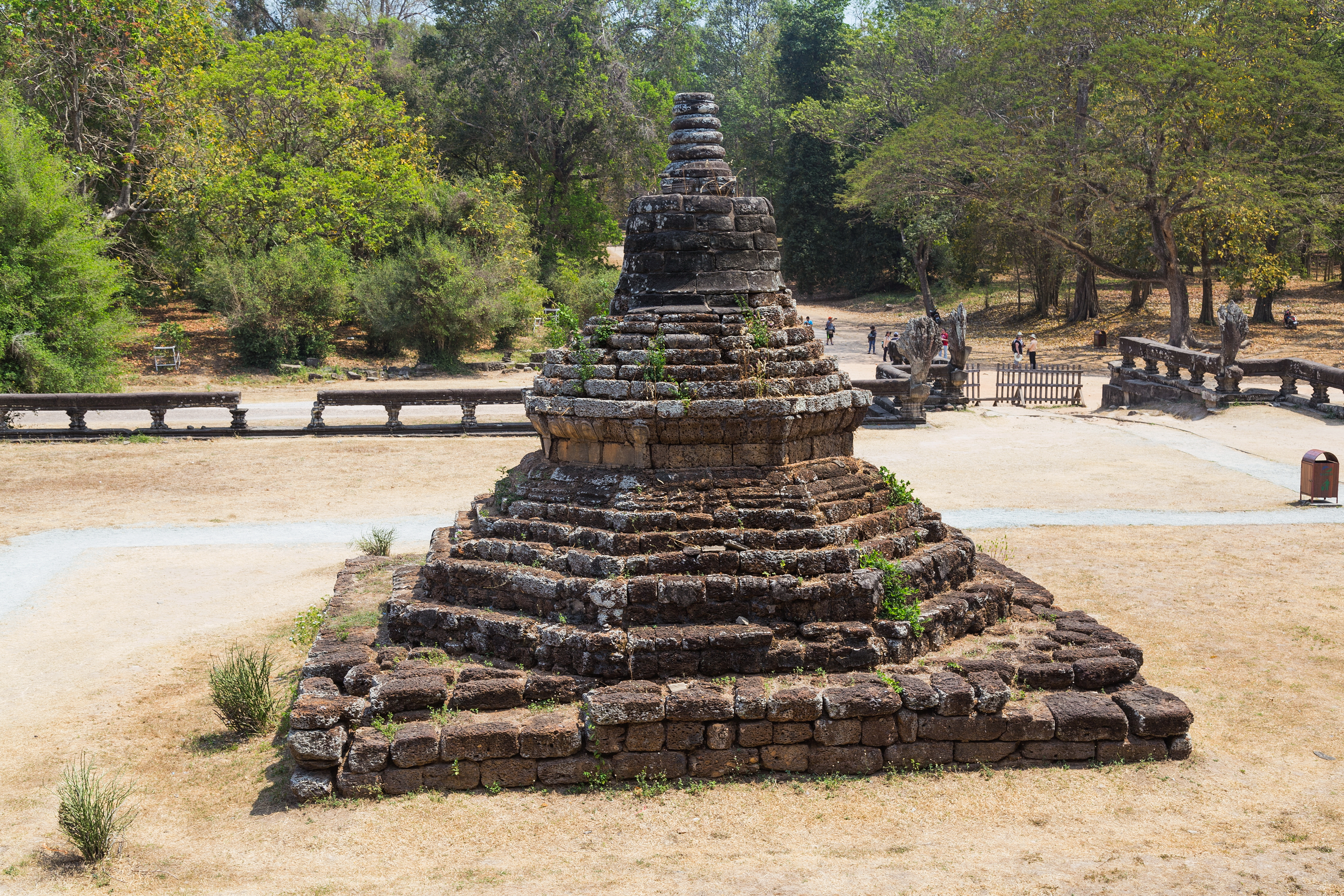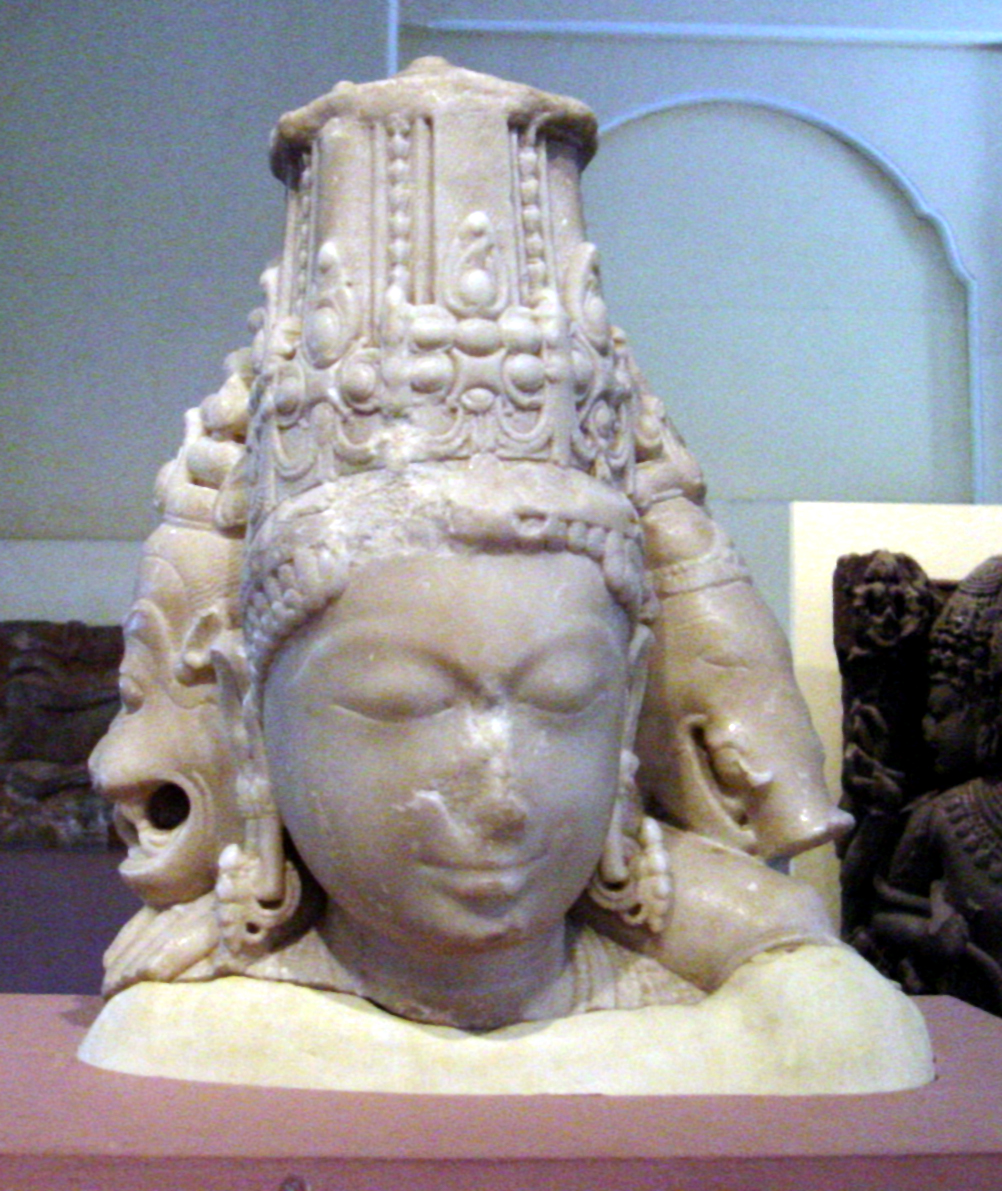|
Khmer Inscriptions
Khmer inscriptions are a corpus of post-5th century historical texts engraved on materials such as stone and metal ware found in a wide range of mainland Southeast Asia (Cambodia, Vietnam, Thailand and Laos) and relating to the Khmer civilization. The study of Khmer inscriptions is known as Khmer epigraphy. Khmer inscriptions are the only local written sources for the study of ancient Khmer civilization. More than 1,200 Khmer inscriptions of varying length have been collected. There was an 'explosion' of Khmer epigraphy from the seventh century, with the earliest recorded Khmer stone inscription dating from 612 AD at Angkor Borei. Beyond their archeological significance, Khmer inscriptions have become a marker of national identity. Language: Sanskrit, old Khmer, and rarely Pali The languages used on Khmer inscriptions are either ancient Khmer or sanskrit while a few have also been found in pali, though the latter are no older than the 14th century. The oldest inscription in S ... [...More Info...] [...Related Items...] OR: [Wikipedia] [Google] [Baidu] |
Southeast Asia
Southeast Asia, also spelled South East Asia and South-East Asia, and also known as Southeastern Asia, South-eastern Asia or SEA, is the geographical United Nations geoscheme for Asia#South-eastern Asia, south-eastern region of Asia, consisting of the regions that are situated south of mainland China, east of the Indian subcontinent, and north-west of mainland Australia. Southeast Asia is bordered to the north by East Asia, to the west by South Asia and the Bay of Bengal, to the east by Oceania and the Pacific Ocean, and to the south by Australia (continent), Australia and the Indian Ocean. Apart from the British Indian Ocean Territory and two out of atolls of Maldives, 26 atolls of Maldives in South Asia, Maritime Southeast Asia is the only other subregion of Asia that lies partly within the Southern Hemisphere. Mainland Southeast Asia is completely in the Northern Hemisphere. East Timor and the southern portion of Indonesia are the only parts that are south of the Equator. Th ... [...More Info...] [...Related Items...] OR: [Wikipedia] [Google] [Baidu] |
Grande Inscription D'Angkor
The ''Grande Inscription d’Angkor'', referenced as K. 301 or Inscription Modern Angkor Wat (IMA) #38, is the longest Khmer inscription at Angkor Wat. Dated to 1701, it is located on the east wall between the ''bas-relief'' galleries and facing the Chey Non ''stupa'' in the courtyard outside. It is considered to be the only dated Middle Khmer metrical poem. Context The ''Grande Inscription d'Angkor'' relates the return to Angkor of a court dignitary, a certain ''Oknha'' Jaiya Nan of Chey Non, in order to accomplish meritorious deeds. After both his two sons died on the battlefield and his wife's death left him a widower, Chey Non was deeply saddened. As a loyal father and husband, he built a laterite stupa near the entrance to the eastern gallery of Angkor Wat in honour of them. It seems impossible to determine whether or not Jaiya Nan composed the inscriptions himself or had them composed by another, perhaps a court poet. Given the unique and personal style of the texts, i ... [...More Info...] [...Related Items...] OR: [Wikipedia] [Google] [Baidu] |
Judiciary
The judiciary (also known as the judicial system, judicature, judicial branch, judiciative branch, and court or judiciary system) is the system of courts that adjudicates legal disputes/disagreements and interprets, defends, and applies the law in legal cases. Definition The judiciary is the system of courts that interprets, defends, and applies the law in the name of the state. The judiciary can also be thought of as the mechanism for the resolution of disputes. Under the doctrine of the separation of powers, the judiciary generally does not make statutory law (which is the responsibility of the legislature) or enforce law (which is the responsibility of the executive), but rather interprets, defends, and applies the law to the facts of each case. However, in some countries the judiciary does make common law. In many jurisdictions the judicial branch has the power to change laws through the process of judicial review. Courts with judicial review power may annul the laws and r ... [...More Info...] [...Related Items...] OR: [Wikipedia] [Google] [Baidu] |
Buddhist Texts
Buddhist texts are those religious texts which belong to the Buddhist tradition. The earliest Buddhist texts were not committed to writing until some centuries after the death of Gautama Buddha. The oldest surviving Buddhist manuscripts are the Gandhāran Buddhist texts, found in Afghanistan and written in Gāndhārī, they date from the first century BCE to the third century CE. The first Buddhist texts were initially passed on orally by Buddhist monastics, but were later written down and composed as manuscripts in various Indo-Aryan languages (such as Pāli, Gāndhārī, and Buddhist Hybrid Sanskrit) and collected into various Buddhist Canons. These were then translated into other languages such as Buddhist Chinese (''fójiào hànyǔ'' 佛教漢語) and Classical Tibetan as Buddhism spread outside of India. Buddhist texts can be categorized in a number of ways. The Western terms "scripture" and "canonical" are applied to Buddhism in inconsistent ways by West ... [...More Info...] [...Related Items...] OR: [Wikipedia] [Google] [Baidu] |
Adi Shankara
Adi Shankara ("first Shankara," to distinguish him from other Shankaras)(8th cent. CE), also called Adi Shankaracharya ( sa, आदि शङ्कर, आदि शङ्कराचार्य, Ādi Śaṅkarācāryaḥ, lit=First Shankaracharya, ), was an Indian Vedic scholar and teacher (''acharya''), whose works present a harmonizing reading of the ''sastras'', with liberating knowledge of the self at its core, synthesizing the Advaita Vedanta teachings of his time. The title of Shankracharya, used by heads of the amnaya monasteries is derived from his name. Due to his later fame, over 300 texts are attributed to his name, including commentaries (''Bhāṣya''), introductory topical expositions (''Prakaraṇa grantha'') and poetry (''Stotra''). However most of these are likely to be by admirers or pretenders or scholars with an eponymous name.W Halbfass (1983), Studies in Kumarila and Sankara, Studien zur Indologie und Iranistik, Monographic 9, Reinbeck Works known ... [...More Info...] [...Related Items...] OR: [Wikipedia] [Google] [Baidu] |
Vaishnavism
Vaishnavism ( sa, वैष्णवसम्प्रदायः, Vaiṣṇavasampradāyaḥ) is one of the major Hindu denominations along with Shaivism, Shaktism, and Smartism. It is also called Vishnuism since it considers Vishnu as the sole Para Brahman, supreme being leading all other Hindu deities, i.e. ''Mahavishnu''. Its followers are called Vaishnavites or ''Vaishnava''s (), and it includes sub-sects like Krishnaism and Ramaism, which consider Krishna and Rama as the supreme beings respectively. According to a 2010 estimate by Johnson and Grim, Vaishnavism is the largest Hindu sect, constituting about 641 million or 67.6% of Hindus. The ancient emergence of Vaishnavism is unclear, and broadly hypothesized as a History of Hinduism, fusion of various regional non-Vedic religions with Vishnu. A merger of several popular non-Vedic theistic traditions, particularly the Bhagavata cults of Vāsudeva, Vāsudeva-krishna and ''Gopala-Krishna, Gopala-Krishna'', and Narayana, ... [...More Info...] [...Related Items...] OR: [Wikipedia] [Google] [Baidu] |
Pancharatra
''Pancharatra'' (IAST: ''Pāñcarātra'') was a religious movement in Hinduism that originated in late 3rd-century BCE around the ideas of Narayana and the various avatars of Vishnu as their central deities.Pancharatra: religious movement Encyclopaedia Britannica The movement later merged with the ancient Bhagavata tradition and contributed to the development of Vaishnavism. The Pancharatra movement created numerous literary treatises in Sanskrit called the ''Pancharatra Samhitas'', and these have been influential Āgama (Hinduism), Agamic texts within the theistic Vaishnava movements.Oriental Institute, Maharaja Sayajirao University of Baroda (1940). Gaekwad Oriental Series, Issue 86, p.7. Literally meani ... [...More Info...] [...Related Items...] OR: [Wikipedia] [Google] [Baidu] |
Shaivism
Shaivism (; sa, शैवसम्प्रदायः, Śaivasampradāyaḥ) is one of the major Hindu traditions, which worships Shiva as the Supreme Being. One of the largest Hindu denominations, it incorporates many sub-traditions ranging from devotional dualistic theism such as Shaiva Siddhanta to yoga-orientated monistic non-theism such as Kashmiri Shaivism.Ganesh Tagare (2002), The Pratyabhijñā Philosophy, Motilal Banarsidass, , pages 16–19 It considers both the Vedas and the Agama texts as important sources of theology.Mariasusai Dhavamony (1999), Hindu Spirituality, Gregorian University and Biblical Press, , pages 31–34 with footnotesMark Dyczkowski (1989), The Canon of the Śaivāgama, Motilal Banarsidass, , pages 43–44 Shaivism developed as an amalgam of pre-Vedic religions and traditions derived from the southern Tamil Shaiva Siddhanta traditions and philosophies, which were assimilated in the non-Vedic Shiva-tradition. In the process of Sanskritisa ... [...More Info...] [...Related Items...] OR: [Wikipedia] [Google] [Baidu] |
Agama (Hinduism)
The Agamas (Devanagari: , IAST: ) are a collection of several Tantric literature and scriptures of Hindu schools.Julius Lipner (2004), Hinduism: the way of the banyan, in The Hindu World (Editors: Sushil Mittal and Gene Thursby), Routledge, , pages 27–28 The term literally means tradition or "that which has come down", and the Agama texts describe cosmology, epistemology, philosophical doctrines, precepts on meditation and practices, four kinds of yoga, mantras, temple construction, deity worship and ways to attain sixfold desires. These canonical texts are in Tamil and Sanskrit. Agamas were predominant in South India but Sanskritized later. The three main branches of Agama texts are Shaiva, Vaishnava, and Shakta. The Agamic traditions are sometimes called Tantrism, although the term "Tantra" is usually used specifically to refer to Shakta Agamas.Mariasusai Dhavamony (1999), Hindu Spirituality, Gregorian University and Biblical Press, , pages 31–34 with footnotes The Agama li ... [...More Info...] [...Related Items...] OR: [Wikipedia] [Google] [Baidu] |
Purana
Purana (; sa, , '; literally meaning "ancient, old"Merriam-Webster's Encyclopedia of Literature (1995 Edition), Article on Puranas, , page 915) is a vast genre of Indian literature about a wide range of topics, particularly about legends and other traditional lore. The Puranas are known for the intricate layers of symbolism depicted within their stories. Composed originally in Sanskrit and in Languages of India, other Indian languages,John Cort (1993), Purana Perennis: Reciprocity and Transformation in Hindu and Jaina Texts (Editor: Wendy Doniger), State University of New York Press, , pages 185-204 several of these texts are named after major Hindu gods such as Vishnu, Shiva, Brahma, and Adi Shakti. The Puranic genre of literature is found in both Hinduism and Jainism. The Puranic literature is encyclopedic, and it includes diverse topics such as cosmogony, cosmology, genealogies of gods, goddesses, kings, heroes, sages, and demigods, folk tales, pilgrimages, temples, medic ... [...More Info...] [...Related Items...] OR: [Wikipedia] [Google] [Baidu] |
Upanishads
The Upanishads (; sa, उपनिषद् ) are late Vedic Sanskrit texts that supplied the basis of later Hindu philosophy.Wendy Doniger (1990), ''Textual Sources for the Study of Hinduism'', 1st Edition, University of Chicago Press, , pages 2-3; Quote: "The Upanishads supply the basis of later Hindu philosophy; they are widely known and quoted by most well-educated Hindus, and their central ideas have also become a part of the spiritual arsenal of rank-and-file Hindus." They are the most recent part of the Vedas, the oldest scriptures of Hinduism, and deal with meditation, philosophy, consciousness, and ontological knowledge; earlier parts of the Vedas deal with mantras, benedictions, rituals, ceremonies, and sacrifices.Gavin Flood (1996), ''An Introduction to Hinduism'', Cambridge University Press, , pp. 35–39A Bhattacharya (2006), ''Hindu Dharma: Introduction to Scriptures and Theology'', , pp. 8–14; George M. Williams (2003), Handbook of Hindu Mythology, Oxford Un ... [...More Info...] [...Related Items...] OR: [Wikipedia] [Google] [Baidu] |
.jpg)








.png)